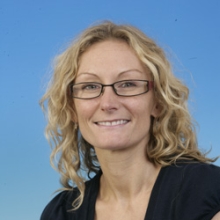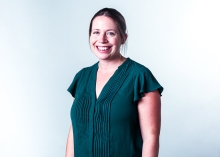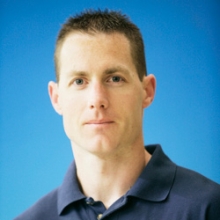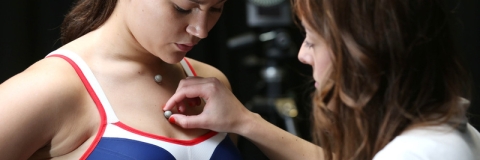
We, the Research Group in Breast Health, use our expertise in breast biomechanics to improve scientific knowledge of breast health, inform the development of breast related products and raise awareness of this important aspect of women’s health.
Our research group is responsible for many international scientific publications in the area of breast biomechanics, bra science and breast health, and we have achieved considerable press coverage. Many of our collaborations are with the world’s major lingerie and sports apparel manufacturers. Ultimately, this helps us to achieve our overall objective of improving women’s quality of life.
Research
Our research group investigates an extensive range of topics related to breast and bra science.

Understanding appropriate breast support
Our research focuses on establishing appropriate breast support for different populations, environments and activities. Understanding how breast support preferences and requirements change over the lifecycle is crucial to offering appropriate solutions to women throughout their lives. Our research is at the forefront of methodological developments in this area.
This enables us to investigate:
- Support provided by different bras.
- Breast support requirements during different activities including but not limited to walking, running, swimming, aqua aerobics, agility tasks, jumping, climbing stairs and lifting.
- Thermal responses to wearing a bra.
- Factors that influence support requirements throughout a woman's life.

Breast support for different occupations
Historically, high support bras have been designed for short duration, high intensity activities, such as running. Therefore, it is not known if these bras are suitable for longer duration occupational tasks; much like those carried out by females in the Military.
Through our collaboration with the HQ Army Recruiting & Initial Training Command, they have implemented a sports bra fit and issue service, a fantastic step forward for female recruit health. However, bra discomfort is still an ongoing issue for this cohort, and can affect their ability to undertake basic training.
Therefore our work with the Army is continuing. This research has the potential not only to impact the current sports bra fit and issue service, but has wider implications for all females in physically demanding occupations.
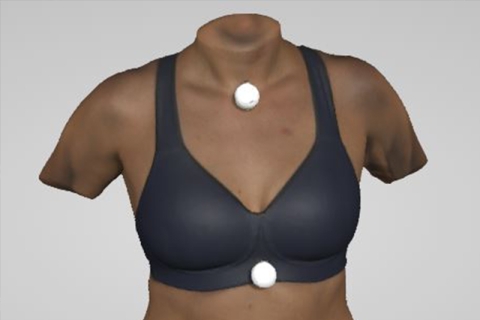
Breast anthropometry
Our research in the area of breast and body size shows that the relationship between the two isn't as clear as originally thought. Clinicians make recommendations for women to lose weight to reduce breast size, but this may not always be appropriate. Our study showed that to lose the amount of breast tissue that's removed during surgery, a woman would have to lose 51 kilograms, or 70% of her body weight.
We have 3D scanning capabilities housed within our breast mechanics laboratory. This specialist equipment enables us to measure the breasts to calculate breast volume and breast position via the high resolution 360-degree images produced. These measurements are sensitive enough to detect breast changes over time, for example, throughout the menstrual cycle.
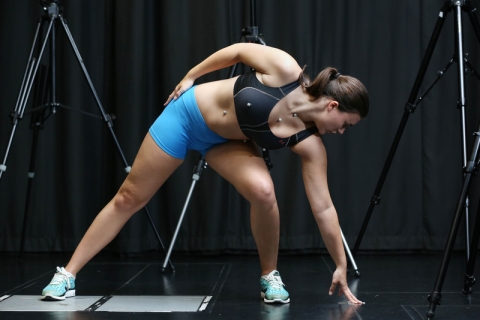
Breast biomechanics and sport performance
We have an ongoing collaboration with the English Institute of Sport and the British Olympic Association to deliver breast and bra education, bra fittings and bespoke bra development for Britain’s top female athletes ahead of international events, such as the Olympic and Commonwealth games.
Within our research, we have explored the potential performance effects of different levels of breast support. When women run in inadequate breast support, we have recorded:
- Increased perceived exertion – suggesting exercise feels harder when breasts are not properly supported.
- Increased upper body muscle activity – suggesting fatigue may be reached sooner.
- Increased ground reaction forces – which may increase the risk of injury to the lower extremities.
- Decreased stride length (by 4cm) – suggesting the wearer is hesitant to stride out. This could mean running an extra mile over the length of a marathon.
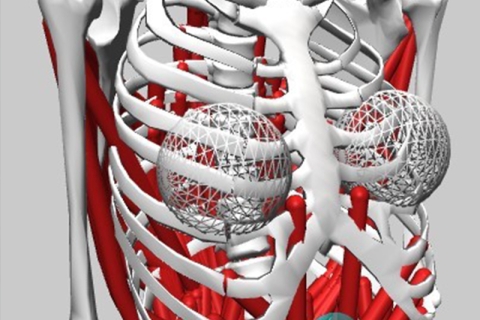
Breast computer simulation modelling
Our computer simulation modelling research has enabled us to answer some important questions not easily addressed in a laboratory. Our computer modelling team (led by Dr Chris Mills) has created a novel model of the female torso to highlight how the breast mass, position and motion on the chest wall can affect the loading on the spine and musculoskeletal system.
The work uses a combination of medical imaging and complex computer modelling techniques to simulate the effect on the breast during a variety of movements. Early results concluded that neglecting the breasts and their position in female computer models may cause a misrepresentation of the muscular demands, by up to 18%. These findings have multiple applications, such as:
- Effects of breast augmentation/reduction
- Potential injury mechanisms in a variety of physical activities for females
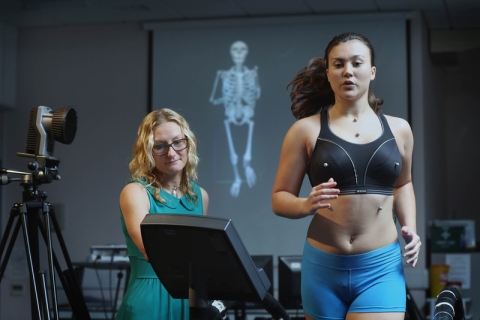
Sports bra performance
Our work has informed the research and development of breast support garments for over a decade. Our recent study on sports bra performance has given us further insight into how specific sports bra characteristics may affect breast movement reduction. We found that over a third of sports bra performance could be explained by five key characteristics, where the presence of each of these characteristics increased the percentage of breast support provided:
- Encapsulation style
- Padded cups
- Adjustable underband
- Nylon (principle fibre content)
- High neckline
These findings facilitate sports bra development and inform consumer choice.

Breast pain
We have strong links with our local hospital and breast clinic to conduct important research in the area of breast pain. Although exercise-induced breast pain is proposed to be linked to the stretch of the breast’s anatomical structures (breast skin and fascia tissue), the exact source of breast pain is still unknown.
We have investigated the prevalence of breast pain within the general population and found that 51.5% of the 1,659 women surveyed experience breast pain. These women tended to be larger breasted and less active. We have also reported high levels of breast pain in other populations we have researched, such as marathon runners and horse riders.
Bra fitting
Over 80% of women have been reported to be wearing the wrong size bra, so an important area of our research focuses on breast sizing and bra fitting. It is crucial that women of all breast sizes wear appropriate and correctly fitting breast support for everyday activities and when exercising, as wearing the correct bra size reduces breast pain, and improves general health and wellbeing.
In one of our studies, we identified that the traditional bra fitting method does not give the best fit. We advocate a series of 'Best Fit' criteria. We believe it is important to educate women on best fit, rather than using a tape measure to dictate bra size.
Narrator: If your bra doesn't fits you properly, you're not alone. Over 70% of women wear the wrong bra size. Your breasts can change shape and size throughout your life, and you might need a different size depending on where you shop.
When buying a new bra, whether it's an everyday bra, a fancy bra, or a sports bra, you should search for your fit, not your size.
We are the research group in Breast health at the University of Portsmouth. We've spent 12 years scientifically developing these five simple steps to the perfect profits. You can ditch the tape measure and check your bra, fit yourself to make sure you're wearing the right size in any style of bra.
Step one: The underband. The under band should sit level all the way around your ribs and should be a firm fits. Allow only a five centimetre gap when pulled away from the body. This is where most of the bra sports comes from, so it's important that the band stays level as you move around.
Step two: The cups. Your breasts should be fully enclosed within the cups. There should be no bulging or gaping at the top or the sides.
Step three: The underwire. The underwire should follow the natural crease of your breast. It should not rest on any breast tissue. Pay close attention to the side of the cups under your arm if the cup fits. But the wire is resting on breast tissue. This style of bra might not be right for your breast shape.
Step four: The centre front. The front of the bra should sit flat against your body. It shouldn't lift away if it does lift away. Try going up a cup size.
Step five: The shoulder straps. The shoulder straps were just able to check these at the end. They should feel comfortable without sticking into your shoulders. The straps keep the bra in place. They are not the main support. Remember, your straps don't have to be the same length on the left and right. Most women have one breast bigger than the other.
Sister sizing. If your bra is not too good fits you sister sizing to find the right fits for you. For example, if you're on the band is too loose, but cut fits, you need to go down and under band size but up a cup size. Whether buying a new bra or checking the fit of bras you already have. Remember to check the underband, the cups, the underwire, the centre front, the straps. With these five simple steps, you can find a bra that fits you well and for all occasions.
External members
- Dr Nikki Brown, Reader in Female Health, St Mary's University – Nikki’s research focuses on breast anthropometry and breast and bra education
- Dr Melissa Jones, Lecturer in Sport and Exercise Science, Bangor University, Wales
Bra testing
Consumers deserve the best in breast support. At the University of Portsmouth, we provide a scientific bra testing service to help you develop the best product possible.
Why work with us
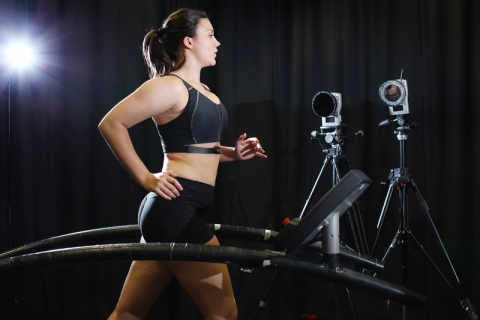
Our facilities
Housed within our specialist breast biomechanics laboratory, we use the latest motion sensor technology to assess the performance of sports bras whilst simulating a range of movements and activities. We can measure the movement of the breast from inside the bra, in three directions (forwards/backwards, side/side and up/down) to provide a clear view of your product's overall breast support capabilities.

Our scientific approach
We deliver robust scientific results based on more than a decade of research in breast health and bra science. The data collection methods we use are developed and aligned to increasing knowledge and expertise. Our methods will help you understand the performance, fit, comfort and consumer appeal of your products.

Our expertise
A collaboration with us gives you access to leading experts in breast biomechanics. With years of experience investigating the performance of bras, through to testing thousands of women, we've built a comprehensive database of bra performance that offers an excellent resource for analysis and comparison. We can inform product design, development and marketing through our Bronze, Silver and Gold bra testing packages.
Bronze, Silver and Gold bra testing packages
Our Bronze, Silver and Gold bra testing packages can:
- Help you understand the performance, comfort and consumer appeal of your products using our rigorous scientific methodologies.
- Test your core styles, prototypes and final iterations before they reach the market.
- Help you gain an advantage by testing competitor products.
- Provide you with an understanding of the breast support requirements for different populations, breast sizes and functions (sports bras).
- Compare the performance of your bras to our unique and comprehensive database of bra performance.
- Provide you with detailed tester feedback on each bra tested.
- Produce a bespoke report containing biomechanical results, tester feedback and recommendations from our experts.
- Enable you to see your products in action through high speed videos of each bra tested (Silver and Gold packages only).
The Research Group in Breast Health bra testing stamp
As one of our clients, you can use our Research Group in Breast Health 'Tested' stamp.
This shows your products have been independently tested by some of the most highly regarded breast science experts in the world.
You can display the stamp on your marketing materials, packaging and presentations, and even on the products themselves.

Other ways you can test your products
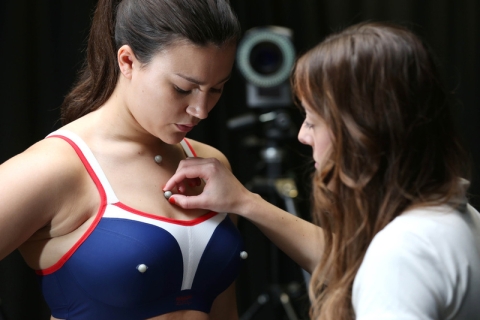
Remote Laboratory Package
We can help you set up your own breast biomechanics laboratory so you can collect your own data, which we will process rapidly using our robust scientific algorithms.
This package enables you to receive quick results to better assess initial prototyping and bra development.
It also ensures you are using the latest data collection and data analysis processes, keeping you ahead of the competition.
Bespoke Research Project
Our research group is interested in investigating the full spectrum of factors which matter to the bra industry.
We can develop bespoke research projects tailored to your specific needs.
We also have a number of fundamental research proposals for which we are seeking commercial partners.
Contact us
Contact us to find out more about our bra testing services and packages.
Phone: +44 (0)23 9284 5161
Email: breastresearch@port.ac.uk
Twitter: @UOP_RGBH
Education
The Science behind breasts and bras workshops
We are committed to raising awareness and improving knowledge on breasts and bras through education. We welcome delegates from all over the world, ranging from bra manufacturers and sports apparel brands to healthcare professionals and students, to learn more about this important area of women's health.
If you are interested in attending a workshop, please email breastresearch@port.ac.uk for more information.
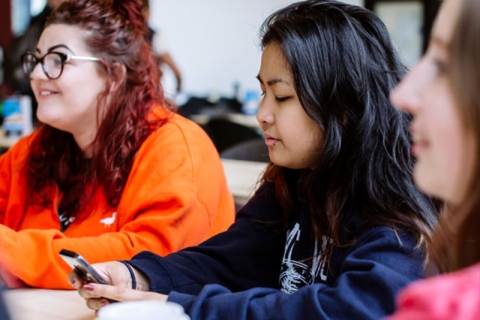
Online workshop
Hosted at the University of Portsmouth, this 3 hours workshop offers delegates the chance to develop their knowledge and understanding of the science behind breasts and bras.
This workshop presents the latest research in:
- Breasts and breast biomechanics
- Breast support
- Bra fit
- Breast and bra education
There will be plenty of opportunities for discussion between sessions and Q&A with experts in the area of breast science.
Our next online workshop will be hosted on Thursday, 27th November 2025, 1430-1730 (BST)

Bespoke workshop
We offer bespoke workshops tailored to suit the needs of the company or individual.
The focus can be on the understanding of one specific area, or combine multiple topics related to breasts and bras.
As an independent research group, we provide impartial, confidential advice and guidance, supported by years of research in this area.
Breast education for teachers
Adolescent girls can go through periods of self-consciousness, negative body image and low self-esteem. This happens at the same time as their first stages of breast development – the first outward sign of puberty.
In 2015 we surveyed more than 2,000 girls between 11 and 17 years old. We found that:
- Few girls knew what sort of bra to wear, whether their bra was a good fit or how to avoid breast pain.
- Three-quarters of girls had at least one concern about their breasts, such as embarrassment when getting changed for sport, breast bounce or breast pain.
- More than 70% of girls wanted to know more about how to check for signs of breast cancer.
50-minute breast education presentation and lesson plan
Following extensive consultation with girls, teachers and schools we have produced Treasure Your Chest, a breast education presentation and lesson plan to help you teach adolescent girls about breast health. This is free to download from our Treasure Your Chest website.
The Treasure Your Chest presentation aims to improve girls' breast knowledge, confidence and breast health habits and covers the following topics:
- An icebreaker to tackle the embarrassment of talking about breasts
- Understanding the anatomy of the breast
- Why some girls may suffer breast pain and why girls need a bra
- The bra fitting process
- Things to look out for when buying a new bra
- Breast sizes and shapes
- Breast awareness
- Looking out for breast cancer
The resources also include detailed learning outcomes and background information so teachers can answer any questions they might get on the topics.
Visit our Treasure Your Chest website to learn more about our education initiative and to download our resources.
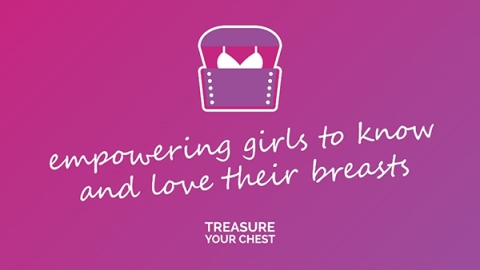
Recent publication highlights
-
Breast health and bra considerations for female officers. Burbage, J., 1 Dec 2023, Police Magazine, p. 12-13.
-
Tackling breast issues in contact sports. Wakefield-Scurr, J., Saynor, Z. L. & Wilson, F., 5 Jul 2023, (Early online) In: British Journal of Sports Medicine.
-
Breast biomechanics, exercise induced breast pain (mastalgia), breast support condition and its impact on riding position in female equestrians. Cameron, L. J., Burbage, J., Lewis, V., Dumbell, L., Billingsley, E., Young, K., King-Urbin, C. & Goater, F., 1 Jan 2022, In: Comparative Exercise Physiology. 18, 1, p. 9-19 11 p.
-
Breast-torso coordination during treadmill running as a function of breast support. Reeves, J. E., Williams, G., Mills, C., Jones, B. & Wakefield-Scurr, J., 3 Jul 2022, p. 301. 1 p.
-
Can we predict the neutral breast position using the gravity-loaded breast position, age, anthropometrics and breast composition data? Norris, M., O'Neill, A., Blackmore, T., Mills, C., Sanchez, A., Brown, N. & Wakefield-Scurr, J., 1 Oct 2022, In: Clinical Biomechanics. 99, 11 p., 105760.
Featured press highlights
-
WWD – Adidas introducing extensive sports bra collection (February 2022)
"Adidas’ new sports bra collection created in partnership with the University of Portsmouth."
-
English Institute of Sport – Innovative sports bras aim to boost health and performance (March 2021)
"The English Institute of Sport (EIS), University of Portsmouth and Clover Global have offered UK athletes the chance to be fitted with bespoke sports bras developed by Clover using innovative technology with the aim of improving both health and performance."
-
"The search for the best sports bra for cycling is not an easy one – but we've found some clear winners."
-
BBC One – The Truth About...Working Out at Home (January 2021)
The Breast Health Research Group featured in the BBC One programme 'The Truth About...Getting Fit at Home' testing the best sports bras for exercise.
-
Triathlete – Supportive Science: The Quest to Build A Better Sports Bra (September 2020)
"More than 40 years after two jockstraps were stitched together, researchers are finally starting to understand how to build a better sports bra."
-
Women's Running – Why It Is Finally Time to Upgrade Your Sports Bra (March 2020)
"Women lose up to four centimeters of stride length due to poorly controlled breast movement while running – which, over the length of a marathon, could translate to running an extra mile, according to a recent study conducted by Brooks Running Co. in conjunction with the University of Portsmouth."
Get involved
There are many ways you can get involved in our research.
Become a partner
We're looking for partners to join our Breast Education Consortium and help fund this innovation on an ongoing, sustainable basis. The consortium will continue to develop breast education resources, beginning with schoolgirls but broadening to other sectors where breast knowledge is poor.
For more information please contact breastresearch@port.ac.uk.
Stay updated
You can get updates on our news and research, sign up for our workshops or volunteer for our studies by subscribing to our newsletter.
Take a look at our newsletter archive for news on our past research.
Take part in our research
We're always looking for female volunteers to take part in out tests such as sports bra testing, bra fit and breast biomechanics.
Complete our volunteer form if you'd like to volunteer or would like more information.

